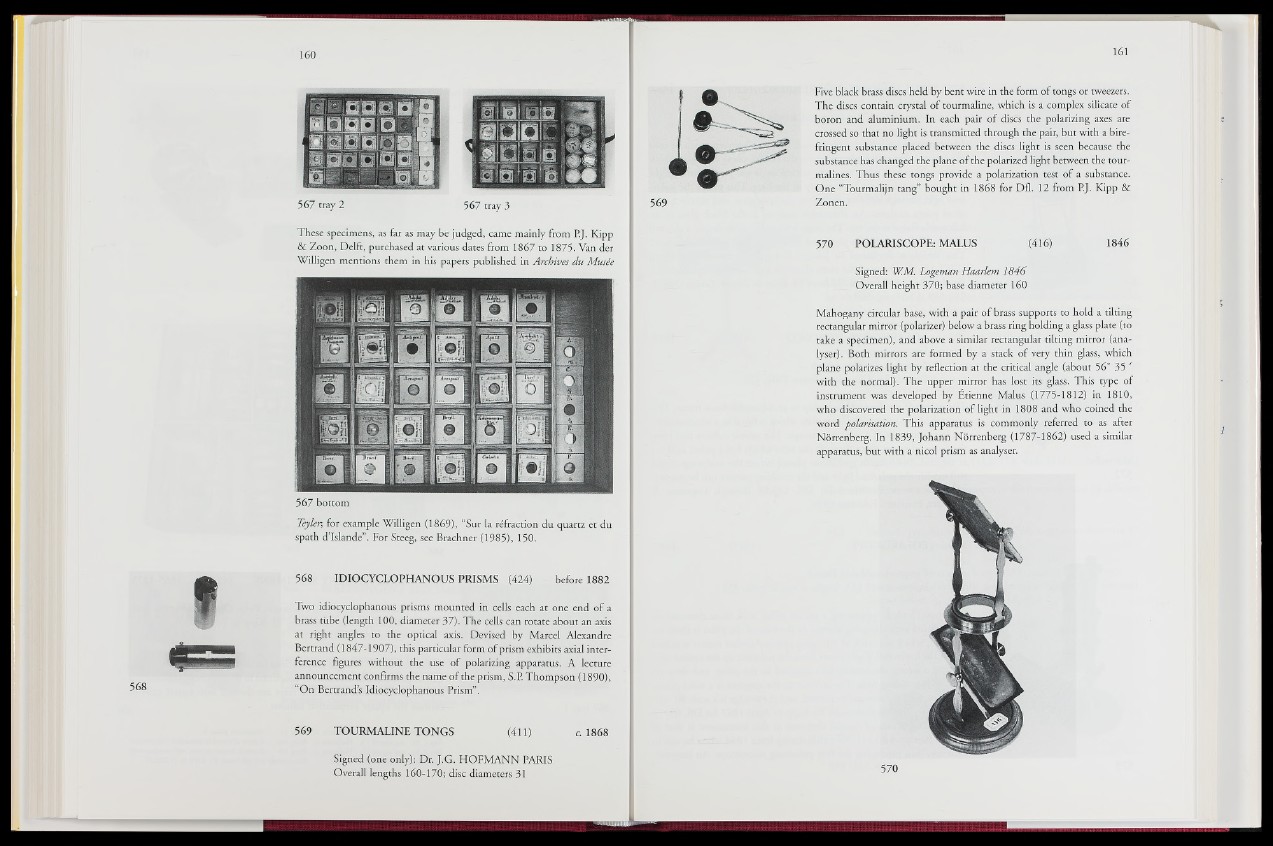
567 tray 2 567 tray 3
These specimens, as far as may be judged, came mainly from P.J. Kipp
& Zoon, Delft, purchased at various dates from 1867 to 1875. Van der
Willigen mentions them in his papers published in Archives du Musée
567 bottom
Teyler, for example Willigen (1869), “Sur la réfraction du quartz et du
spath d’Islande”. For Steeg, see Brachner (1985)B50.
568 IDIOCYCLOPHANOUS PRISMS m 2 4 ) before 1882
Sw o idiocyclophanous prisms mounted in IjH e a ch at one end of a
• brass tube (length 100, diameter 37). The cells can rotate about an axis
at right angles to the optical axis. Devised by Marcel Alexandre
Bertrand (18jf§T-1907)5 IBs particular form of prism exhibits axial interference;
figures without the use of pola|t|Mg apparatus. A lqcjjife
announcement confirms the name of the prism, S.P. ThompsonM890),
“On Bertrands Idiocyclophanous PrisnTf
569 TOURMALINE TONGS (4 l l l | c. 1868
Signed (one only)} Dr. J.G. HOFMANN PARIS
Overall lengths 160-170; disc diameters 31
• f•
569
’ Five black brass discs held by bent wire in the form of tongs or tweezers.
The discs contain crystal of tourmaline, which is a complex silicate of
boron and aluminium. In each pair of discs the polarizing axes are
crossed so that no light is transmitted through the pair, but with a bire-
fringent substance placed between the discs light is seen because the
substance has changed the plane of the polarized light between the tourmalines.
Thus these tongs provide a polarization test of a substance.
One “Tourmalijn tang” bought in 1868 for Dfl. 12 from P.J. Kipp &
Zonen.
570 POLARISCOPE: MALUS (416) 1846
Signed; W.M. Logeman Haarlem 1846
Overall height 370; base diameter 160
Mahogany circular base, with a pair of brass supports to hold a tilting
rectangular mirror (polarizer) below a brass ring holding a glass plate (to
take a specimen), and above a similar rectangular tilting mirror (ana-
lysefpi Both mirrors are formed by a stack of very thin glass, which
plane polarizes light by reflection at the critical angle (about 56“ 35 '
with the normal). The upper mirror has lost its glass. This type of
instrument was developed by Etienne Malus (1775-1812) in 1810,
who discovered the polarization of light in 1808 and whqjcoined the
word polarisation. This apparatus is commonly referred to as after
Norrenberg. In 1839MJohann N6rrenberg|f|787-1862) used a similar
apparatus, but with a nicol prism as analyser.